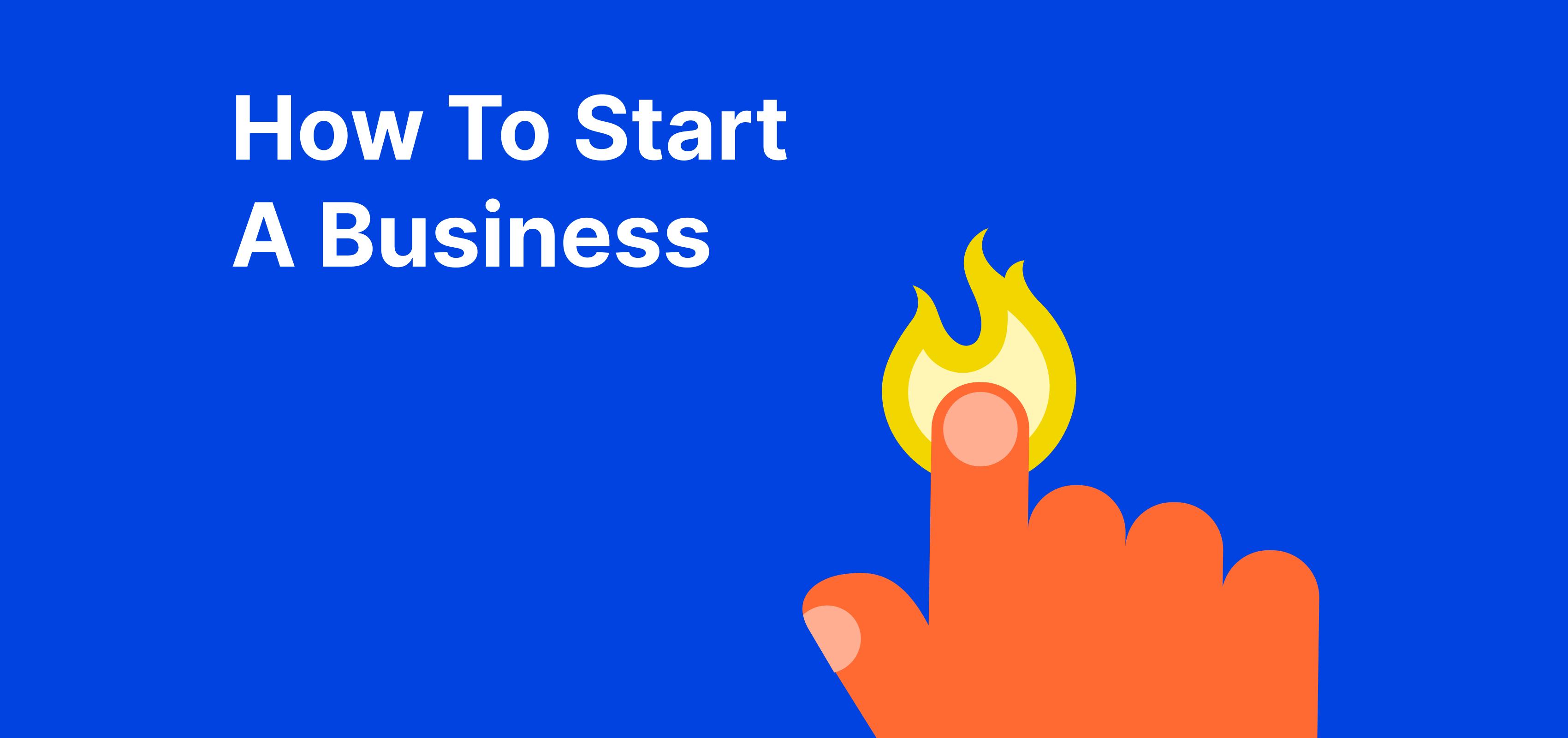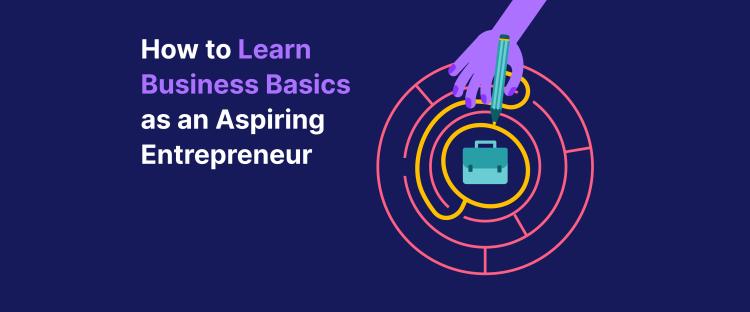Are you too busy focusing on your work to find time to dedicate to self-growth? Try the Headway app, where you can view 15-minute book summaries, daily insights, and more that can help you to improve and expand your skills so you can grow on the go!
Starting a business is a big step. After all, there is much to do, organize, and set up, not to mention all the responsibilities accompanying it. Many people find it hard to know where to begin and are unsure of everything needed to start a business.
This article provides a step-by-step guide on starting a business, so you can be sure to have all the information you need to start your own business. So, whether you already have the perfect product or service in mind or want to work on your terms, this guide will help set your business up for success.
Key points
Starting a business is no small undertaking; there is much to prepare and handle when setting up a company.
It is an excellent idea to follow this comprehensive step-by-step guide to ensure everything is under control.
There are numerous steps to starting a business, such as finding your big idea, writing a business plan, developing a brand strategy, and registering your business.
Starting a business in 10 simple steps
Find your big idea

You cannot start a business without an idea. But finding that big idea can be challenging. Here are some questions to ask yourself when thinking about what sort of concept you want to go with:
Do you want to develop your own product?
Do you want it to be a full-time business venture or a side hustle?
Is there a particular industry you are interested in?
What are you passionate about?
What funding do you have?
Do you want to be able to work from home?
What are your top skills?
What do others come to you for help with?
Are you planning on going it alone or partnering with someone?
By reflecting on your answers to these questions, you should be able to narrow your focus. Once you have settled on a concept, ensure that it is something you would be good at, if it’s realistic, and whether you think it would be profitable.
Top tip: A great way to determine whether a business idea is viable is to research it on Google Trends.
2. Research your chosen product or service
Now you have decided on a product or service you are excited about, it is time to double-check that it is a smart move. You might have a great idea, but you need to ensure that it will succeed as a business. Plus, conducting research allows you to identify possible problems, understand the customer’s needs, and set goals for your company. Here are a few factors you should research regarding your idea:
Market research: This is when you collect data about your potential market to see if your idea is valid, such as through interviews, focus groups, and surveys. Market research can also inform you of what equipment you will need for the business, such as storage and computer software.
Market analysis: This is when you study the industry your idea falls under.
Target market: You need to find a target audience that resonates with your idea. It is vital to do this so that you know what sort of person you are catering your product or service to. It helps with business decisions, can determine how you develop your product and allows you to engage with potential customers.
Competition: It is crucial to understand what the competition is like for your idea so that you can determine a unique selling proposition (USP).
Top tip: Consider conducting a strengths, weaknesses, opportunities, and threats analysis (SWOT analysis).
3. Write a business plan

A business plan is a document that is often used to assist in gaining funding for a business. But, whether or not you are looking for outside funding, a business plan is an excellent idea. This is because it helps address vital questions about the running of your company, from your finances to your mission statement. It is a detailed document about your company and its short- and long-term tactics. Here are some top tips for writing a strong business plan:
understand your audience;
keep it concise and to the point;
ensure that the style, voice, and tone are consistent;
have a clear goal.
A business plan should also include the following:
description of the business;
data from market analysis;
structure and organization of the business;
the business mission and goals;
the products or services involved;
a background summary (research);
your marketing plan;
a financial plan (including startup costs);
an executive summary.
4. Source your products
Now that you have locked in your product and completed your business plan, it is time to consider making it a reality, whether you are making, manufacturing, or sourcing your product.
Making a product: If your product is handmade, you can make it at home or in a rented location. Ensure that you check up on the legal requirements for a home-based company, as there are stringent rules and protocols.
Manufacturers: If you are manufacturing your product, you will probably need to find a manufacturing partner. A reputable manufacturer should have knowledge of your industry as well as the relevant packaging and labeling laws. Certain manufacturers can even advise you about best product development practices.
Suppliers: If your business sells existing products, you must find a supplier or brand to source them from. Business models under this option include wholesale, dropshipping, or print-on-demand. Work out the most appropriate option for your company.
This step can also help determine your shipping strategy. To establish this, you first need to work out how you will tackle order fulfillment. Many new company owners package and ship orders one at a time (unless you opt for dropshipping or print-on-demand). It can be a great way to get to grips with all business aspects. As the company expands, you may wish to outsource this to a third-party company and use a fulfillment service.
5. Develop your brand
The importance of your brand cannot be understated. It will be the deciding factor in whether a customer will decide to purchase from you. This is why you must develop your brand identity and strategy, as it allows you to tell a story, build credibility and trust, and goes beyond a name and logo. When thinking about building your brand, address the following:
who you are and what product or service you provide;
what matters to you;
what sort of colors and designs complement your product or service;
what your company represents (think about the mission statement and values of the brand);
your USP and what sets you apart;
how you want customers to respond to your brand;
the photographs of your product or service (this is especially important for e-commerce brands);
the visual identity of your brand, such as the logo, name, and overall style);
the packaging of your product;
the voice of your brand;
the story behind your brand.
Top tip: Ensure your brand name has not already been chosen, and the domain and social handles are available. Choosing a name before writing the business plan may seem like a better idea, but the planning process often helps generate great business name ideas.
6. Create your website
Now that you have determined your brand identity and strategy, you should create a website to present your brand to the outside world. While it may sound like a difficult task, numerous website builders and tools are available to help set up a website and design and customize it. Creating a website may seem like it should occur further down the road, but it is a great way to soft launch your website (and brand) to the world. This allows you to test your brand, receive customer feedback, and make alterations before the official launch.
7. Get your business registered

Depending on where you are located, there are different rules and regulations on manufacturing, marketing, and shipping. Therefore, ensure you do the proper research to be sure that you are following all the needed legal steps. Certain countries do not need you to register the business to start officially, so do double-check.
Firstly, you should decide on the structure of your business. Speaking to an expert, such as an accountant, to ensure you choose the correct option is recommended. Below are several types of business structures that you should consider:
Limited Liability Company (LLC): This option limits your personal liability and can be owned by one (or more) companies or people and must have a registered agent.
Limited Liability Partnership (LLP): This is like an LLC but is generally used for a licensed company professional such as an accountant. This option must have a partnership agreement.
Sole proprietorship: If you are a one-person band, you might wish to choose this type. The business and owners are seen as the same (for tax and legal reasons). The owner takes on full liability for the business.
Doing Business As (DBA): This is when you operate under a name different from your company’s legal name.
Corporation: Similar to an LLC, this limits your personal liability financially. Different types of corporation options exist, such as C-corporations, S-corporations, or B-corporations.
Top tip: Corporations, particularly C-corporations, are suited for new businesses seeking funding from venture capitalists (VCs).
During this step, you should also consider getting business insurance. Many scenarios, such as health issues, a natural disaster, or a lawsuit, could bring you trouble. Consider the different types of business insurance to determine what is applicable for you, such as:
professional liability insurance;
product liability insurance;
business interruption insurance;
workers’ comp insurance;
commercial property insurance;
personal liability insurance (may not be needed if your business structure means you are not personally liable).
Further down the road, you may wish to consider other protections, such as registering a trademark, offering health insurance to employees, and writing a list of terms and conditions.
8. Take care of finances
The importance of keeping your finances in check is paramount. By managing your money, you can be confident that you are not overspending and have help if needed. An excellent first step is to open a company bank account, as it separates your company and personal finances. When considering the right bank, ask yourself the following:
What is the bank’s reputation?
What is the bank’s fee structure?
Does it have a straightforward loan process?
Does it have expert advice in your industry?
You should already have a financial plan (included in your business plan), and now is the time to use it. Below are some financial statements that should be a part of your finances:
Income statements: This explains how much money your business makes and is done monthly, quarterly, or annually.
Balance sheets: This details the company assets, shareholder equity, and liabilities and explains how much the business is worth once these have been accounted for.
Cash flow statements (CFS): This explains the cash transactions (both in and out) in a certain period.
On top of this, this step includes managing your taxes. Depending on your company structure, what tax you need to pay will vary, so ensure you read up thoroughly. You should also establish whether you should be charging tax for your products or services. An accountant can help you with this step. Remember that you can also use small business accounting software to help further.
Top tip: Keep business records organized and help meet tax obligations.
9. Advertise your business
What is the point in having a business if you have no customers or interest? This is where advertising comes in and where you can market your company. Here are a few suggestions:
Social media: Create a social media presence to present your brand identity, interact with customers, and maybe even sell your products.
Emails and newsletters: This is a great and inexpensive way to touch base with your customers.
Networking: Attend virtual or in-person events to learn more about your industry and form connections.
Online directories: Get your company listed on sites such as Google Business Profile, Yelp, and Facebook to reach more customers.
Organic marketing: This refers to free marketing techniques. For instance, you could run giveaways, offer discount codes, or even take pre-orders.
10. Grow your business

It is now time to think about expansion. You may wish to keep your business small and humble, but here are some ideas if you want to grow your business:
Crowdfunding: Raising funds from the public.
Business grants or loans: Consult with a financial advisor to determine the best choice.
Grow your team: Consider hiring more employees to assist with running the business.
Consider selling overseas: This lets you expand into other markets and find new audiences.
Vendors: Consider whether you want third-party help running the business, such as a credit card processing provider or an accountant.
Top tip: To ensure you have comprehensive business knowledge, check out our blog post on books every business owner should read.
Embark on a journey of self-growth with Headway
Starting a business requires a lot of work and dedication. Many business owners, therefore, find it very challenging to find time to read books about business that could help them improve and grow. Fortunately, Headway provides a fantastic solution.
Headway offers bite-sized learning on the go to gain invaluable knowledge and insights. It offers insights, 15-minute book summaries, crafted content, personalized features, and visual explainers to foster easy and fun learning.
To get started, check out our business section for book lists, tips, and articles that can help you become a better business person. Expanding skill sets is important for business founders, as it allows them to rectify mistakes, gain better business acumen, and ultimately own and run a better business. And with Headway, your business will not get in the way of self-growth and development.
Download the Headway app today!
FAQs
What is the easiest business to start?
A sole proprietorship is considered one of the easiest businesses to start, as it only requires one person to manage it.
What business can I do from home?
You can run many businesses from home, including pet care, blogging, freelancing, and dropshipping.
How do I start a beginner business?
There are many steps to creating a beginner business, and the Headway app contains the business guides you need to get started.










